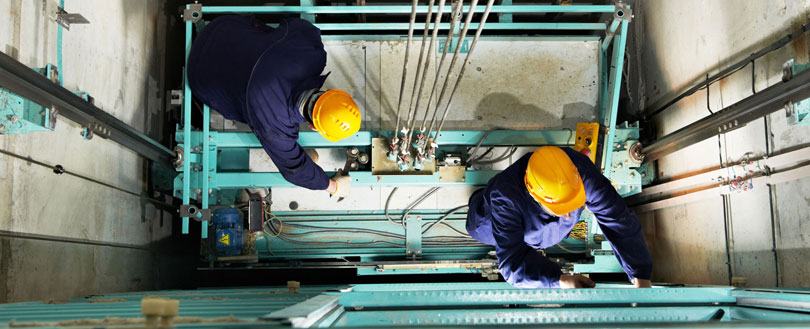Trusted Lift Maintenance Repair: Avoid Breakdowns and Downtime
Wiki Article
Pro Tips for Keeping Your Lift in Leading Problem: A Comprehensive Overview
Guaranteeing the ideal functioning of a lift system is critical for a safe and effective operation in various settings, from commercial warehouses to commercial structures. By adhering to an organized maintenance regimen and preemptively resolving possible problems, lift owners can reduce expensive downtime and safety and security dangers.
Value of Regular Upkeep
Regular upkeep of your lift is crucial to ensure its optimal performance and longevity. By adhering to a normal maintenance routine, you can recognize and deal with possible concerns before they rise into costly repair services or unforeseen downtime. Routine maintenance tasks such as lubricating moving components, evaluating for wear and tear, and inspecting hydraulic systems can assist avoid malfunctions and guarantee risk-free operation.Overlooking regular maintenance not just jeopardizes the performance of your lift however likewise presents safety and security threats to individuals and home. Components that are not appropriately maintained might fail suddenly, bring about accidents or damage to the lift itself. Moreover, resolving concerns at an early stage via upkeep can prolong the life-span of your lift and decrease the probability of major breakdowns.
In addition to enhancing security and performance, regular maintenance can additionally save you cash in the future. By purchasing precautionary upkeep procedures, you can prevent costly repair work or substitutes that might develop from neglecting the maintenance of your lift. Overall, focusing on normal maintenance is essential for taking full advantage of the capability and durability of your lift system.
Top Elements to Inspect

In addition, pay close attention to the lift's safety and security attributes, such as emergency quit switches, safety sensing units, and interlocking devices, to ensure they are functioning appropriately. On a regular basis inspect the lift shaft for debris or blockages that might impede the movement of the lift cars and truck. Finally, do not forget to analyze the doors, joints, and door drivers to assure smooth opening and closing procedures. By thoroughly examining these leading elements, you can capture potential issues early and ensure your lift remains in leading condition.
Proactive Troubleshooting Strategies
By tracking metrics such as lift rate, motor temperature level, and power consumption, maintenance teams can recognize very early indications of prospective issues and take restorative actions before they escalate. In addition, applying a preventative upkeep schedule that includes lubrication of moving components, testing of emergency situation brakes, and calibration of sensing units can proactively deal with common lift system troubles.Furthermore, purchasing training programs for maintenance team on fixing methods certain to the lift version set up can empower them to identify and settle issues promptly. By staying in advance of possible problems via proactive troubleshooting, lift drivers can ensure a smoother and a lot more trustworthy operation while reducing the risk of unexpected malfunctions.
Crucial Lubrication Practices
Executing correct lubrication practices is critical for making certain the smooth operation and longevity of lift systems. Routine lubrication assists lower rubbing in between moving parts, avoiding deterioration that can result in pricey repair services and downtime. When it concerns raise maintenance, adhering to a strict lubrication routine is vital.Selecting the right lube is the initial step in efficient maintenance. Various components of the lift system might need certain sorts of lubricants, such as grease visit our website or oil. Get in touch with the producer's guidelines to figure out the suitable lubricants for each part.

Resolve any kind of problems immediately to protect against further damage and guarantee the ongoing smooth procedure of your lift system. By prioritizing proper lubrication methods, you can extend the lifespan of your lift and enhance its performance.
Precaution for Lift Operators
In order to maintain a risk-free workplace and promote operational effectiveness, lift operators must rigorously adhere to recommended safety and security procedures, alongside prioritizing necessary lubrication techniques for optimal lift efficiency. Security procedures for lift drivers are vital to stop accidents and make certain the smooth functioning of the lift system. Operators must go through comprehensive training on correct lift procedure, emergency situation treatments, and safety and security standards. Routine devices assessments and maintenance checks are vital to recognize and attend to any type of prospective safety and Related Site security threats without delay. It is necessary for operators to constantly comply with producer recommendations for load capacities, operational limitations, and safety functions use.In addition, lift operators must prioritize individual safety equipment (PPE) such as headgears, gloves, and safety belt when functioning at heights or handling heavy lots. Clear communication amongst drivers, maintenance professionals, and other employees is vital to stop misconceptions that could cause accidents. Finally, drivers need to stay attentive, focused, and prevent interruptions while running the lift to ensure the security of themselves and others in the location.
Conclusion
Finally, maintaining a lift in leading problem is crucial for making sure safety and security and efficiency in procedures. Normal upkeep, comprehensive assessments of crucial parts, proactive troubleshooting, proper lubrication methods, and adherence to precaution are essential for prolonging the life expectancy of the lift and stopping mishaps. By complying with these guidelines, lift drivers can make sure the ongoing capability and safety and security of their equipment.By sticking to a structured maintenance program and preemptively attending to possible issues, lift owners can mitigate costly downtime and safety hazards. Frequently inspect the lift shaft for particles or obstructions that can impede the activity of the lift vehicle.In order to preserve a safe functioning environment and maintain operational performance, lift drivers have to carefully stick to recommended security procedures, alongside prioritizing vital lubrication practices for ideal lift performance. Security procedures for lift operators are essential to prevent important link crashes and guarantee the smooth functioning of the lift system. Normal upkeep, detailed examinations of essential parts, positive troubleshooting, proper lubrication techniques, and adherence to security measures are essential for lengthening the lifespan of the lift and avoiding crashes.
Report this wiki page